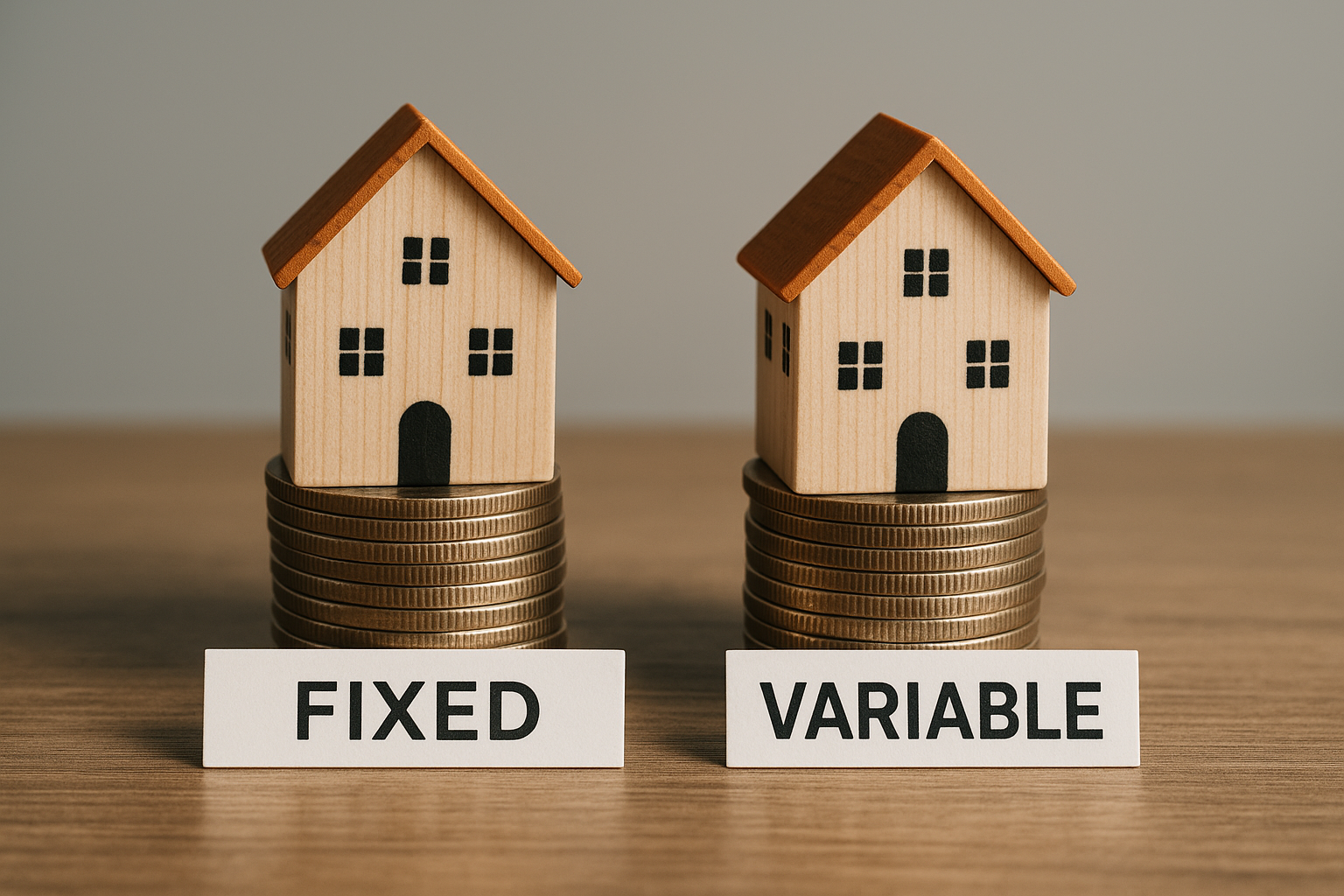Home Loan Terms Every Buyer Should Know

Whether you're a first-time buyer, upgrading your home or looking to invest, understanding common home loan terms can make the process far less overwhelming. Here's a breakdown of key terminology you’ll likely come across in your journey, demystified so you can feel more confident every step of the way.
1. Pre-Approval
Also known as conditional approval, this is when a lender assesses your financial situation and confirms how much they're willing to lend based on your financial situation. It’s not a guarantee, but it helps you understand your budget and signals to sellers that you’re a serious buyer.
2. Loan-to-Value Ratio (LVR)
LVR (Loan-to-Value Ratio) represents the percentage of the property’s value that you're borrowing from the lender. It’s calculated by dividing the loan amount by the property’s purchase price (or value) and then multiplying by 100. For example, if you’re buying a $500,000 property and borrowing $400,000, your LVR is 80%. A lower LVR typically gives you access to better interest rates and helps you avoid paying Lender’s Mortgage Insurance (LMI).
3. Lender’s Mortgage Insurance (LMI)
If your LVR is above 80%, most lenders will apply a Lender’s Mortgage Insurance (LMI) fee. This insurance protects the lender, not you, in case you’re unable to repay the loan. It can be a substantial cost, either paid upfront or added to your loan amount. In some cases, LMI can be avoided, so it’s worth speaking with our experts to explore your options.
4. Offset Account
An offset account is a transaction account linked to your home loan. The balance in this account reduces the interest charged on your loan by offsetting your loan balance. For example, if your loan is $500,000 and you have $50,000 in your offset account, you’ll only be charged interest on $450,000.
While your regular repayments stay the same, the interest savings go directly toward paying off the principal, helping you reduce your loan faster. Offset accounts often come with debit card access, but keep in mind that many lenders charge a fee for this feature.
5. Redraw Facility
A redraw facility allows you to make additional repayments on your home loan and access those extra funds later if needed. This helps reduce the interest you pay over time while offering flexibility. It’s also important to note that redrawing from your loan account can have tax implications, so be sure to consult a tax professional. If you’re unsure, your broker can connect you with an expert.
6. Fixed Rate vs Variable Rate
Fixed Rate: Your interest rate stays the same for a set period (e.g., 1–5 years), giving certainty over repayments.
Variable Rate: Your interest rate can change with the market, allowing you to benefit from drops—but also exposing you to rises.
7. Principal and Interest (P&I) vs Interest Only (IO)
P&I: Your repayments cover both the loan amount and interest—reducing your loan over time.
IO: You only pay interest for a set period (anywhere from 1 to 5 years, typically), then the repayment reverts to P&I. Interest only repayments can reduce upfornt monhtly repayments but doesn’t lower your loan balance during the IO period.
8. Settlement
Settlement is the final step in the purchase process, where legal ownership of the property is transferred to you. At this point, your lender releases the loan funds, and you officially become the property owner, keys in hand (with the bank noted on title as the mortgagee, of course).
9. Break Costs
If you exit a fixed-rate loan early, whether due to refinancing, selling or repaying the loan in full, your lender may charge break costs. These can be significant, especially if market interest rates have dropped since you locked in your fixed rate. Always review your loan terms and speak to your broker before making changes to a fixed-rate loan.
10. Serviceability
Serviceability refers to your ability to comfortably meet loan repayments based on your income, expenses and existing financial commitments. Lenders assess your serviceability to ensure you can manage the loan not just now, but also under potential future rate rises.
11. Comparison Rate
The comparison rate combines the interest rate with most fees and charges to reflect the true cost of a loan over time. It’s a useful tool when comparing loan offers, but be sure to check if it includes all relevant fees.
12. Equity
The difference between your property’s market value and the remaining balance on your home loan. As you pay down the loan or your property value increases, your equity grows. Equity can later be accessed for renovations, investments or other goals.
13. Discharge
The process of ending your mortgage with your current lender, either by paying off the loan in full or refinancing to a new lender. A discharge form is usually required to remove the lender's legal claim over your property and there are typically fees applicable.
Final Thoughts
Understanding these home loan terms gives you an edge when making decisions, asking questions or negotiating with lenders. And of course, your CheckMyRate broker will be with you every step of the way, translating the fine print and helping you make smart, confident choices.
« Knowing key home loan terms empowers you to ask better questions, compare options confidently, and avoid costly surprises. If anything’s unclear, your broker is there to help, so don’t hesitate to ask. »





